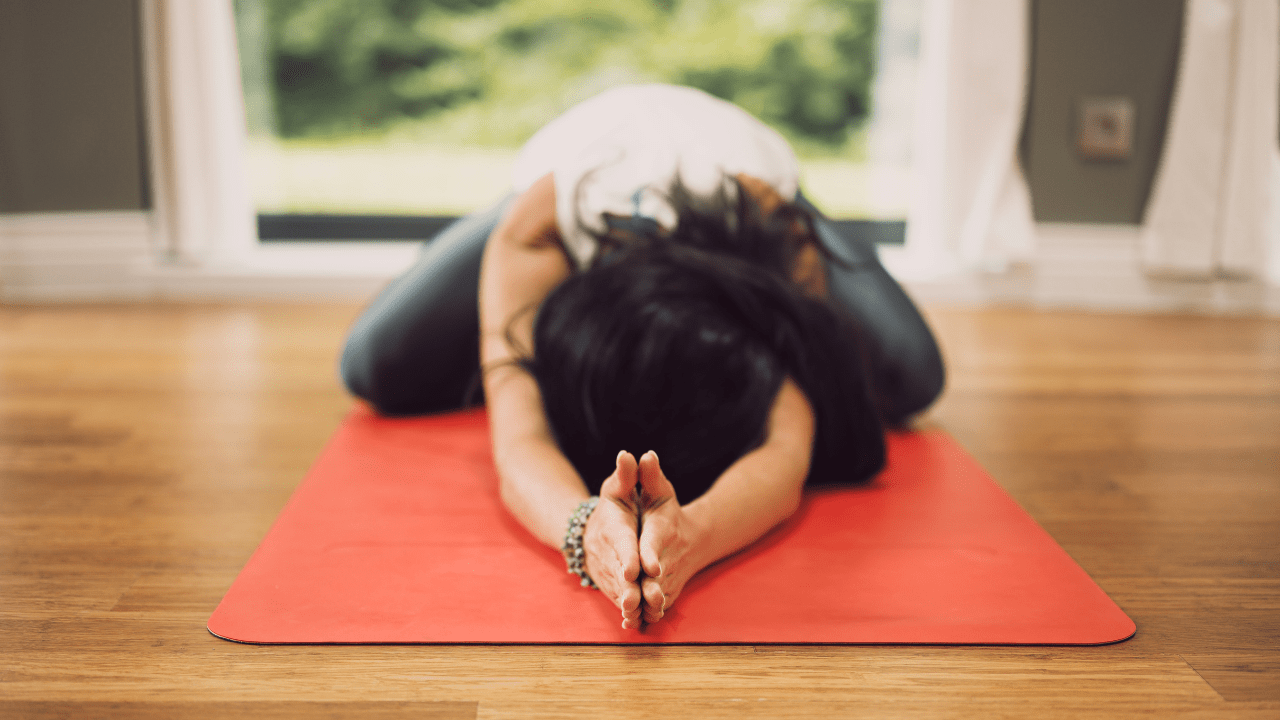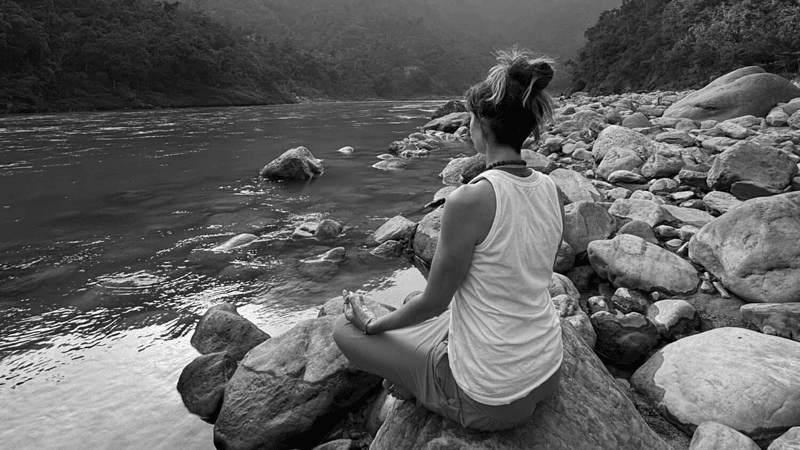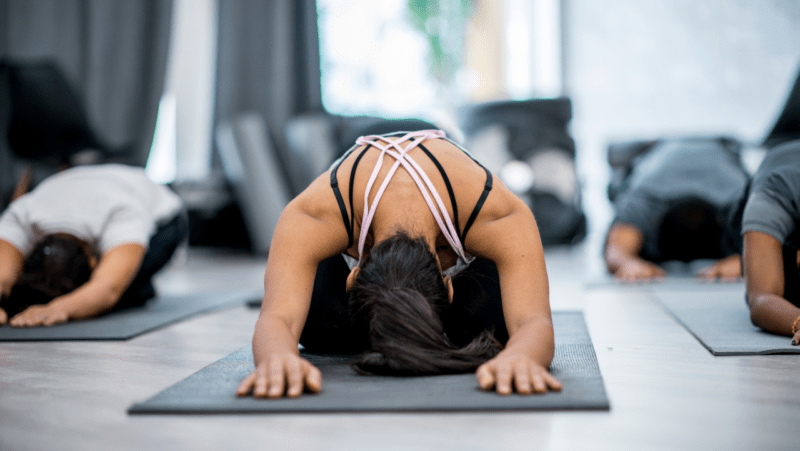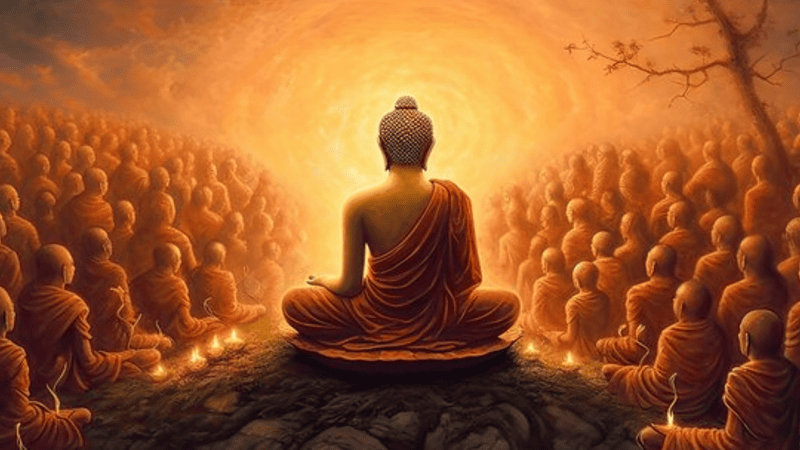
Life on the yoga mat
A guide to navigating ego for students and teachers. By Tracy King
Ancient yogis believed that ego (Ahankara) is a key source of human suffering. Our ego is the aspect of us that builds a sense of self and identity. If our ego is secure and balanced we can be impartial, more responsive and less reactive in life. If our ego is insecure we can have lots of negative thoughts and distorted beliefs causing feelings of separation and pain. An ego becomes unhealthy the more we look outside of ourselves for comparison. The less we are bothered by those around us and what they are doing the less distress we have in life. There is no need to feel that we are not enough and that others are more than we can be.
There are ways that can help us step outside of ego. Being in busy and noisy environments leaves the ego thinking it is threatened. Yoga allows us to step back from this and teaches us to focus on what happens on our mat and not the one next to us. However, often people think yoga is just about how well we perform an asana (posture). This belief is why ego can often show up to a class as an uninvited guest, masquerading in many disguises. It is not only at play when we are trying to be the best, it’s our ego that fears pain when we don’t feel good enough. People often skip classes or their home-based practice if not feeling 100% or if they have a minor injury. Yet many modifications are available for asana for many types of discomfort. Most things are possible (within the remit of medical advice).
People struggle when they do not perform something as well as they did the day before… echos of ego once more. I had carpal tunnel syndrome, coming into my 300-hour yoga teacher training and had to adapt my own practice in many ways. It was such a struggle, as I felt I had to be performing asana perfectly to be good enough to teach. Some days I had to be off of my wrists altogether. Adapting my posture and modifying asanas meant I developed a much greater body awareness. Injury can make us kinder and more compassionate to our bodies. We see what is possible and accept this with gratitude. The need to 'be perfect' and 'be strong' that the ego can create, is hugely challenged if we move outside our comfort zone and show up when we are not our best. In fact that is probably when we need to be on the mat the most.
As a yoga teacher, I have to not only be aware of my own ego but that of my students. We have to consider the impact of student ego in classes to avoid injury and discouragement. We may see a student not following instructions and will often invite people to do what is right for their bodies, perhaps suggesting this is acceptable. The key, as a teacher is to not take it personally. There is a multitude of reasons that people do their own thing and it really doesn’t matter why. It’s our own ego that needs them to be doing our thing. There is no real need to give it energy.
As a teacher, if we see someone doing something that may cause injury, tell them your concerns. If they choose to continue you have the choice of letting them be responsible for themselves or setting a boundary of that not happening on your watch. Advanced poses like headstand or handstand may impact others if not controlled effectively and this may need some intervention.
Someone doing something different can make other people uncomfortable. They can distract other students. If the majority of a class appears disturbed, then we do need to intervene. It is usually more appropriate to speak to people after a class. Beginners particularly, need role models to show them they can develop and not just be shown things that feel impossible and out of their reach.
Some students may frequently be late or may question your thinking directly. Take a breath and show kindness and compassion. This way you are modelling interpersonal skills that they will implicitly take into their reality, although we can’t guarantee what they will choose to do with this!
Having some rules for class conduct can be helpful, as if these are discussed and consented to upon joining, you can refer someone back to these if boundaries are crossed. This process externalises the dynamic between you, to focus on a specific document.
Yoga teaches us to let go and focus on the present. Bring your attention to the students that are listening to you. When you have had a disruption to the class, use your own practice to help you not ruminate on this. Letting go does not mean ignoring the problem but don’t take it into your own reality and personalise the experience. There is no need to change your teaching style if one or two students have little desire to learn from you. You will attract your people. Obviously we do need constructive feedback to develop our practice, so we need to discern aspects of any experience that can be integrated into our own learning.
The key as a student is to focus on all that is within the four corners of your mat, allowing your gaze to be soft when finding your ‘drishti’ (point of focus). If your drishti should drift to the corners of another mat then gently guide it back home.
The key as a teacher is to assess the risks of your rogue yogi and respond accordingly, rather than react.
Be aware that what goes on on the mat never stays on the mat. Teacher or student, how we show up in the class is how we are in the world. So be sure you are being exactly how you want to be and you will then become all that you can be.





